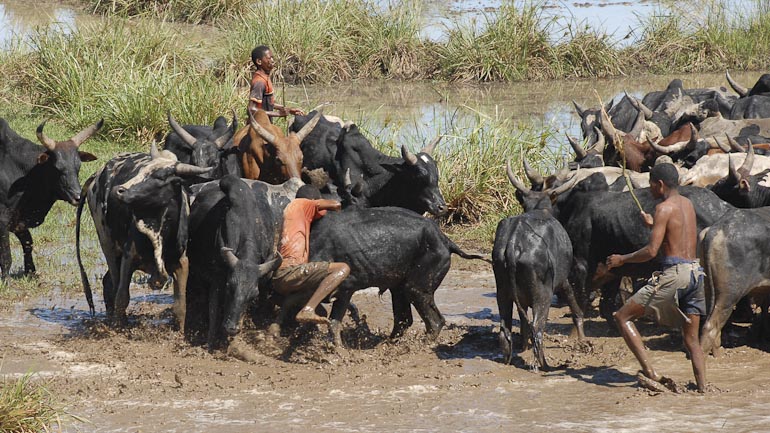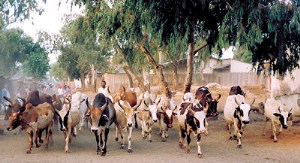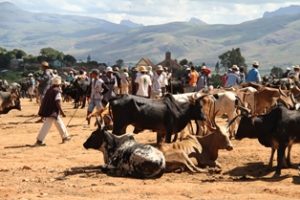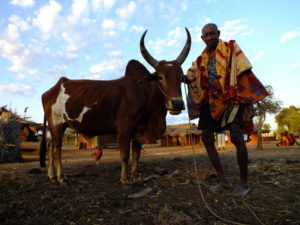Tradition with certain risks
As an agriculturally oriented country, livestock farming and agriculture have always played a crucial role in Madagascar. Unfortunately, this focus has already taken a very painful and drastic toll in many areas surrounding nature: Many hectares of Madagascar’s original forests have had to make way for crop and pasture lands.
Zebus as Prestige Objects
In Malagasy culture, Zebus hold a special place: they are needed to gain the favor of ancestors and are an essential part of many ceremonies. However, Zebus are not typically seen as having additional benefits. The milk and leather of humpback cattle are not processed, and people do not typically consume the meat of the animals. Even for agricultural work, the cattle are only minimally used, occasionally pulling a cart or trampling the earth on rice fields. In fact, the presence of Zebus can lead to conflicts between farmers and herders.
Zebus cost most families significantly more than they benefit, but changing the entrenched traditions in Madagascar is anything but easy. Nowadays, in addition to the high costs, another risk factor has emerged for all Zebu owners: cattle theft in Madagascar has increased dramatically in recent years. In fact, stealing a Zebu has always been considered a test of courage, especially among the Bara people, to prove one’s masculinity. However, in recent years, cattle theft has taken on larger proportions, with criminal organizations operating in many areas. This poses a significant challenge, especially for the poorer segments of the population. For the population living in small villages and communities in rural areas, this situation poses a high risk. Also, in connection with the Todesmarsch der Zebus

Traditions are hard to change
One factor that stands out in relation to the breeding of Zebus is that the cost-benefit calculation is extremely unbalanced. The people on the island have no benefits from raising cattle other than prestige. Since meat consumption in Madagascar has drastically decreased, even the benefits of raising cattle have diminished.









